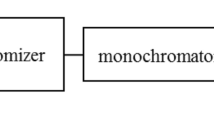Abstract.
Trace elements have been at the focus of attention for decades with considerable emphasis on their role in biology and biomedical sciences, environmental sciences, geology, archaeology and material sciences. They comprise a large number of elements, some having essential physiological functions, whereas others are toxic, mutagenic or carcinogenic. A few even have antiproliferative and anticarciniogenic properties. The advent of various instrumental techniques and sophisticated instrumentations has made their detection to very low limits possible, making this a very important multidisciplinary study. Among these techniques the energy-dispersive X-ray fluorescence (EDXRF) technique is being widely used for trace element detection in various fields of science. Keeping the importance of trace elements in mind, the Kolkata centre of UGC-DAE Consortium for Scientific Research initiated several research schemes in different fields of trace element research using various techniques, EDXRF being one of the main techniques. A Xenemetrix (erstwhile Jordan Valley) EX 3600 EDXRF spectrometer is being used to carry out the research. This presentation aims to highlight some of the very recent applications of EDXRF in the study of the role of trace elements in pre-cancerous tissues, medicinal plants and also in some environmental studies.
Similar content being viewed by others
References
P C Gupta, J. Oral Pathol. Med. 18, 17 (1989)
I R H Kramer et al, Br. Dent. J. 144, 171 (1978)
F S Mehta and J E Hamner III, in: Tobacco-related oral mucosal lesions and conditions in India (Basic Dental Research Unit, TIFR Publication, Mumbai, 1993) pp. 89–95
T Axell et al, Comm. Dent. Oral Epidemiol. 12, 145 (1984)
Daman Lal, J. Int. Dental Assoc. 26, 1 (1953)
S S Joshi, Ind. J. Otolaryngology 4, 1 (1953)
O-H Ng et al, Environ. Monit. Assess. 123, 63 (2005)
S Calvelo and S Liberatore, J. Atmos. Chem. 49, 199 (2004)
A K Samal and S C Santra, Ind. J. Environ. Health 44, 71 (2002)
G Lorenzini et al, Atmos. Environ. 40(22), 4025 (2006)
O S Rossini and P J Rautio, Atmos. Chem. 49, 137 (2004)
S S Ram et al, Int. J. Environ. Sci. 1(2), 233 (2010)
N Deo et al, Ann. Botany 73, 557 (1994)
N S Murali and A H Teramura, J. Plant Nutr. 8, 177 (1985)
C F Musil and S J E Wand, Plant Cell Environ. 17, 245 (1994)
R G Cuero et al, Food Microbiol. 3, 107 (1986)
F C Kafatos and T Eisner, Science 303, 1257 (2004)
Author information
Authors and Affiliations
Corresponding author
Rights and permissions
About this article
Cite this article
SUDARSHAN, M., RAM, S.S., MAJUMDAR, S. et al. Energy-dispersive X-ray fluorescence – A tool for interdisciplinary research. Pramana - J Phys 76, 241–247 (2011). https://doi.org/10.1007/s12043-011-0030-6
Published:
Issue Date:
DOI: https://doi.org/10.1007/s12043-011-0030-6




